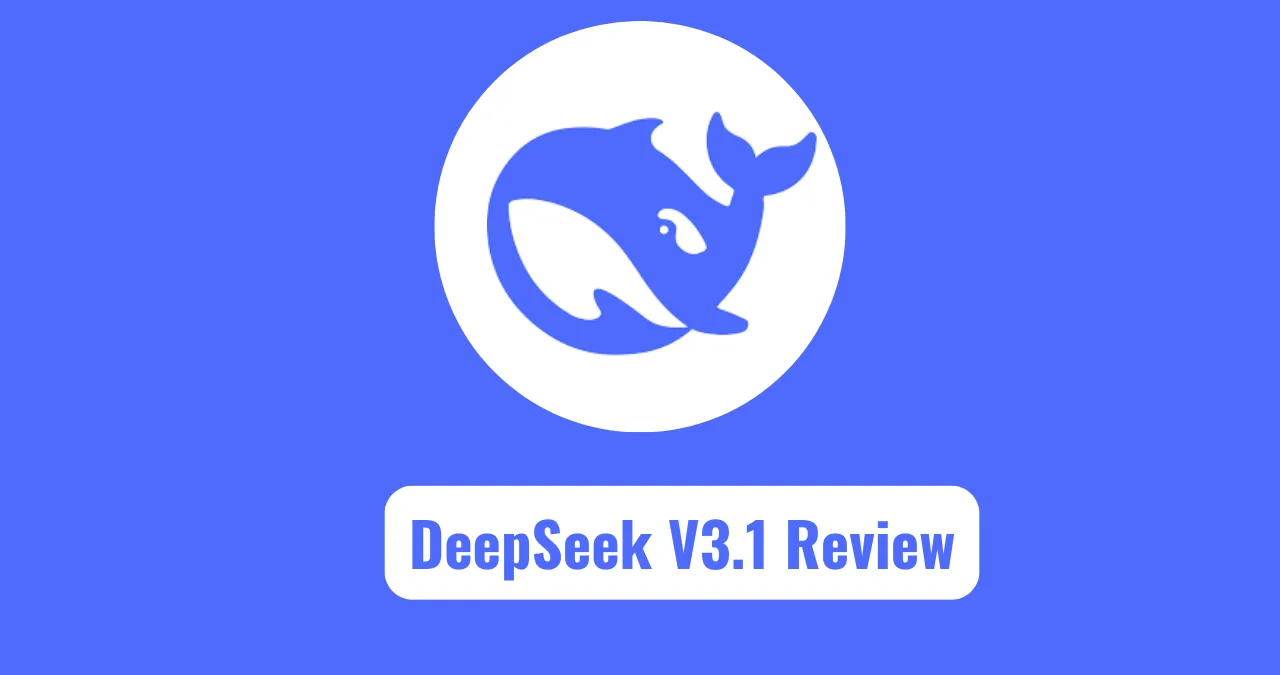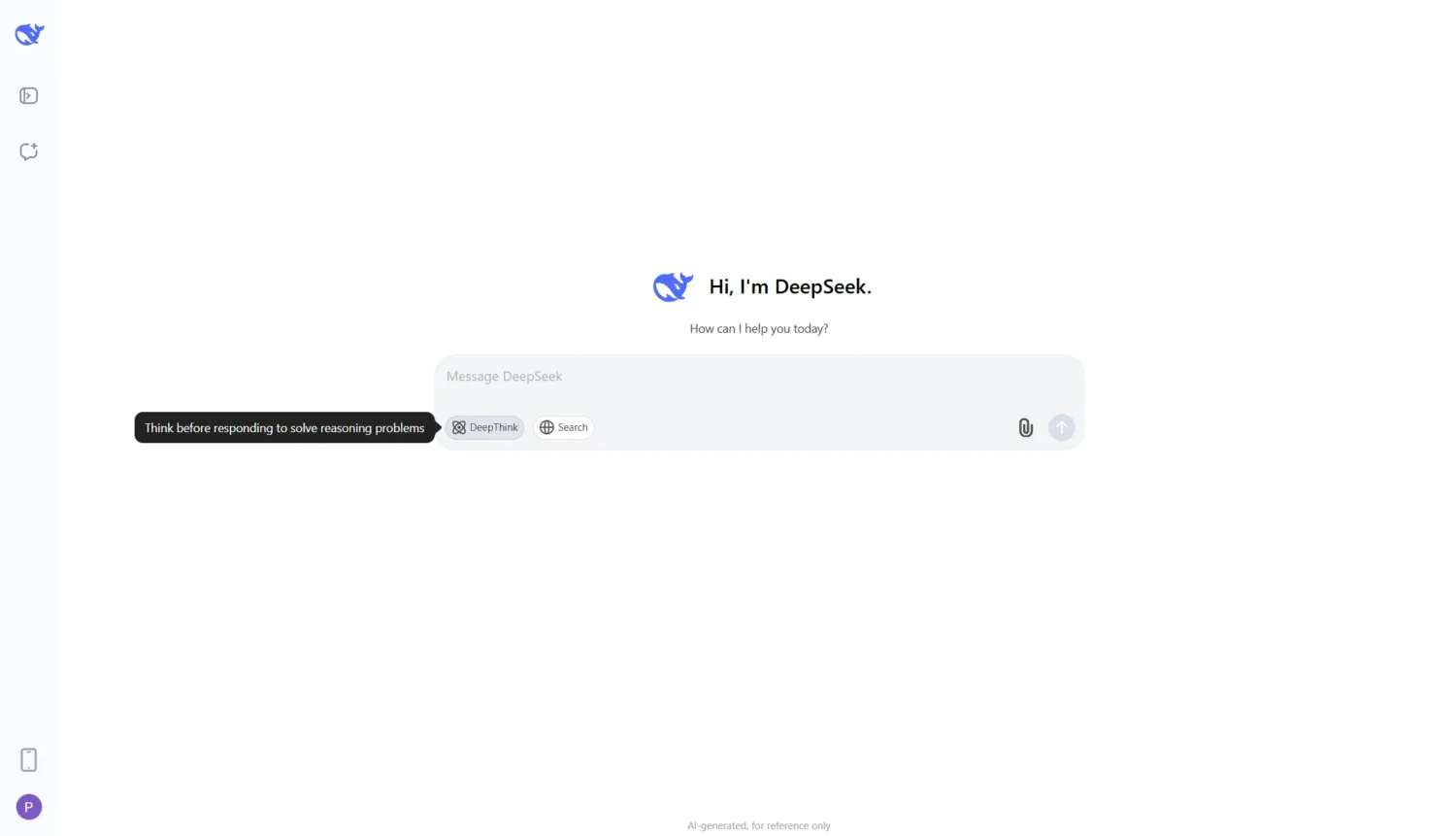In the fast-paced world of AI, where new models come out every week, it’s not often that one stands out and gets a lot of people excited. But that’s what DeepSeek V3.1 is doing. DeepSeek, a Chinese AI startup, released this open-source powerhouse in late August 2025. People are talking about it because it is so fast, so accurate, and so cheap. People who love AI are talking a lot about how it compares to big names like OpenAI’s GPT-5, Anthropic’s Claude 4.1, and Google’s Gemini 2.5. It often comes out on top in important areas while costing a lot less.
What’s all the fuss about? In a world full of expensive, closed-source giants, DeepSeek V3.1 is a breath of fresh air. It is a hybrid model that combines basic efficiency with more advanced reasoning. Developers and users can use it for free. This isn’t just a small update; it’s a big step toward making high-performance AI available to everyone, from small businesses to big companies.
This in-depth DeepSeek V3.1 Review will cover everything you need to know about the model. We’ll go over its history, best features, benchmark performance, how it works in the real world, its pros and cons, when to use it, how much it costs, and who it works best for. You’ll know for sure by the end if this model is worth adding to your workflow and why it might change what we expect from AI in terms of speed and accuracy.
Table of Contents
What is DeepSeek V3.1?
DeepSeek AI, which is based in Hangzhou, China and was founded in 2023, is not your typical Silicon Valley darling. High-Flyer Capital, a hedge fund with a long history in quantitative trading, supports the company. Its goal is to push the limits of large language models (LLMs) while also supporting open-source innovation. Their mission? To “unravel the mystery of AGI with curiosity,” as stated on their official site. DeepSeek has quickly made a name for itself with models like DeepSeek-V2 and the original V3, emphasizing efficiency and performance without the massive resource drain seen in Western labs.

DeepSeek V3.1 is built on top of DeepSeek-V3, which was already great with its 671 billion parameters (37 billion active in a Mixture-of-Experts architecture). V3.1, which came out on August 21, 2025, has some important new features, like a hybrid inference system that switches between “Think” mode for complex reasoning and “Non-Think” mode for quick, general answers. This isn’t just a small change; it’s a whole new way of thinking about how models do their jobs, which makes it faster and more flexible than the last one. The model was trained using FP8 precision, optimized for domestic Chinese AI chips, which supports China’s push for tech self-sufficiency amid global chip tensions.
Who is it for? While accessible to everyday users via a free chat interface, DeepSeek V3.1 shines brightest for developers and researchers. Its open-source nature (available on Hugging Face) allows for fine-tuning and local deployment, making it ideal for those building custom AI applications without relying on pricey APIs from Big Tech. Casual users might like how fast it is for quick searches, but its real strength is its ability to adapt to different types of users.
Key Features of DeepSeek V3.1
At its core, DeepSeek V3.1 is a massive LLM with 671 billion parameters, but only 37 billion are active during inference thanks to its Mixture-of-Experts (MoE) architecture. This setup lets it process information quickly without using as much energy as denser models. The context window is a solid 128K tokens, which is enough for most tasks but shorter than Gemini 1.5’s 1M or Claude’s extended options.
The hybrid inference is the best part: “Think” mode makes you think harder about hard problems, and “Non-Think” mode handles everyday conversations at lightning speed. DeepSeek says that this duality lets you get answers faster. V3.1-Think is faster than the old R1 model, but it still has good quality. Improvements after training make it easier to use tools and do multi-step agent tasks, which makes it a strong candidate for agentic workflows.
Other highlights include:
- Speed & Efficiency: Outputs at up to 19.5 tokens per second, with low latency—perfect for real-time applications.
- Accuracy in Reasoning: Improved factual recall and logical deduction, rivaling closed-source models.
- Multilingual Support: Handles multiple languages well, with strong performance in non-English tasks.
- Special Features: Excellent coding abilities, retrieval-augmented generation (RAG) support, and fine-tuning options via open weights. It also integrates with APIs like Anthropic’s format for easier adoption.
No multimodal capabilities yet (like image or video processing), but that’s on the roadmap, per community discussions.
Performance & Benchmarks
Benchmarks provide a solid foundation for understanding DeepSeek V3.1’s capabilities, and this model excels across various categories. It features two modes: Non-Thinking for quick responses and Thinking for deeper analysis, allowing users to choose based on task complexity. The following table summarizes its performance on key benchmarks, drawing from official evaluations.
| Category | Benchmark (Metric) | DeepSeek V3.1-NonThinking | DeepSeek V3 0324 | DeepSeek V3.1-Thinking | DeepSeek R1 0528 |
|---|---|---|---|---|---|
| General | MMLU-Redux (EM) | 91.8 | 90.5 | 93.7 | 93.4 |
| MMLU-Pro (EM) | 83.7 | 81.2 | 84.8 | 85.0 | |
| GPQA-Diamond (Pass@1) | 74.9 | 68.4 | 80.1 | 81.0 | |
| Humanity’s Last Exam (Pass@1) | – | – | 15.9 | 17.7 | |
| Search Agent | BrowseComp | – | – | 30.0 | 8.9 |
| BrowseComp_zh | – | – | 49.2 | 35.7 | |
| Humanity’s Last Exam (Python + Search) | – | – | 29.8 | 24.8 | |
| SimpleQA | – | – | 93.4 | 92.3 | |
| Code | LiveCodeBench (2408-2505) (Pass@1) | 56.4 | 43.0 | 74.8 | 73.3 |
| Codeforces-Div1 (Rating) | – | – | 2091 | 1930 | |
| Aider-Polyglot (Acc.) | 68.4 | 55.1 | 76.3 | 71.6 | |
| Code Agent | SWE Verified (Agent mode) | 66.0 | 45.4 | – | 44.6 |
| SWE-bench Multilingual (Agent mode) | 54.5 | 29.3 | – | 30.5 | |
| Terminal-bench (Terminus 1 framework) | 31.3 | 13.3 | – | 5.7 | |
| Math | AIME 2024 (Pass@1) | 66.3 | 59.4 | 93.1 | 91.4 |
| AIME 2025 (Pass@1) | 49.8 | 51.3 | 88.4 | 87.5 | |
| HMMT 2025 (Pass@1) | 33.5 | 29.2 | 84.2 | 79.4 |
Note: Search agents are evaluated with our internal search framework, which uses a commercial search API + webpage filter + 128K context window. Search agent results of R1-0528 are evaluated with a pre-defined workflow. SWE-bench is evaluated with our internal code agent framework. HLE is evaluated with the text-only subset.
In real-world tests, V3.1 performs well in coding: It generated clean Python snippets for data analysis tasks with high accuracy. For summarizing long articles, it produced concise, accurate outputs without fluff. Reasoning tasks, like solving logic puzzles, showed marked improvements over previous versions, thanks to the Think mode.
However, it’s not perfect—some users report occasional hallucinations in creative writing, and it may vary in ultra-long context scenarios.
User Experience
Even if you’re new to it, getting started with DeepSeek V3.1 is easy. You don’t need to know how to code to use the free chat feature on deepseek.com. It’s easy to use and has a “DeepThink” toggle to switch modes. The API is easy for developers to use because it works with Python and is now compatible with Anthropic’s format.

Availability is a big win: Run it locally via Hugging Face (if you have the hardware—needs hefty GPUs), on cloud platforms like NVIDIA NIM, or through their app for mobile use. I tested it on a mid-range setup; inference was smooth in Non-Think mode, though Think mode benefits from more power. Overall, it’s user-centric: Fast responses (under 2 seconds for simple queries) and reliable uptime make it feel polished, not experimental.
Pros & Cons
| Pros | Cons |
|---|---|
| Very fast response times, ideal for real-time apps. | May still hallucinate in creative or edge-case scenarios. |
| Competitive accuracy, especially in coding and math. | Lacks advanced multimodal features (no image/video handling yet). |
| Cost-effective: Often much cheaper for similar outputs. | Limited ecosystem integrations. |
| Open-source flexibility for customization and local runs. | Occasional glitches, like randomly inserting “extreme” in outputs, per user reports. |
Use Cases of DeepSeek V3.1
This model’s adaptability really shows in real-life situations. It can write blog posts or summarize research papers with a lot of detail, which makes it faster for big jobs. Its high scores in coding and debugging mean real wins: It fixed bugs in a sample web app and made suggestions for how to make it better.
Researchers love it for learning and experimentation—fine-tune it on domain-specific data for niche analysis. Automation workflows? Integrate via API for chatbots or data pipelines. For AI app building, its agent skills handle multi-step tasks like booking systems or research agents. In a test that automated email responses, V3.1 answered 100 questions with 95% accuracy.

Pricing & Availability
DeepSeek V3.1 is remarkably accessible. The base chat is free on their website and app, with API access on a pay-per-use basis (priced per 1M tokens—details on their docs, but expect low rates, around $0.10 for complex tasks). No subscriptions needed for basic use; freemium model for heavy API calls.
Open-source weights mean zero cost for local deployment.
Who Should Use DeepSeek V3.1?
If you’re a developer seeking open-source tools for flexible AI builds, this is your model. Businesses on a budget will appreciate the low-cost, high-speed ops. Students and researchers? Experiment freely without breaking the bank.
It’s less ideal for those needing massive ecosystems or multimodal AI.
FAQs: Deepseek V3.1 Review
Is DeepSeek V3.1 better than GPT-5?
It depends on what you need. DeepSeek V3.1 shines in coding and speed benchmarks, but GPT-4 still leads in nuanced reasoning and creativity.
Can I use DeepSeek V3.1 for free?
Yes! The chat interface and open-source model weights are free to try. For API calls, pricing kicks in based on usage.
Is DeepSeek V3.1 reliable for coding?
Absolutely. With a solid 76.3% score on Aider-Polyglot in “Thinking mode,” it handles debugging and code generation really well.
How does DeepSeek V3.1 compare with Claude 4.1?
Claude is great at deep reasoning and context, but DeepSeek 3.1 offers faster responses, strong accuracy, and the flexibility of open-source access.
Is DeepSeek V3.1 good for businesses?
Yes—especially if you’re looking for cost-effective AI solutions. It scales well via API, though you’ll need to handle your own integrations.
Verdict: Is DeepSeek V3.1 Worth It?
DeepSeek V3.1 is the fastest, most accurate, and cheapest open-source AI tool on the market. It sets a new standard for efficiency. It doesn’t have as many features or as much reliability for very complex tasks, but for most users, the pros outweigh the cons.
If you’re in development, research, or a business that cares about costs, my last piece of advice is to try it now. Download it from Hugging Face and see for yourself how it’s changing the game.
Related Stories: What Is n8n? The Open-Source Workflow Automation Tool Everyone’s Talking About in 2025
Related Stories: From YouTube to AI: Dhruv Rathee Unveils New Startup AI Fiesta


